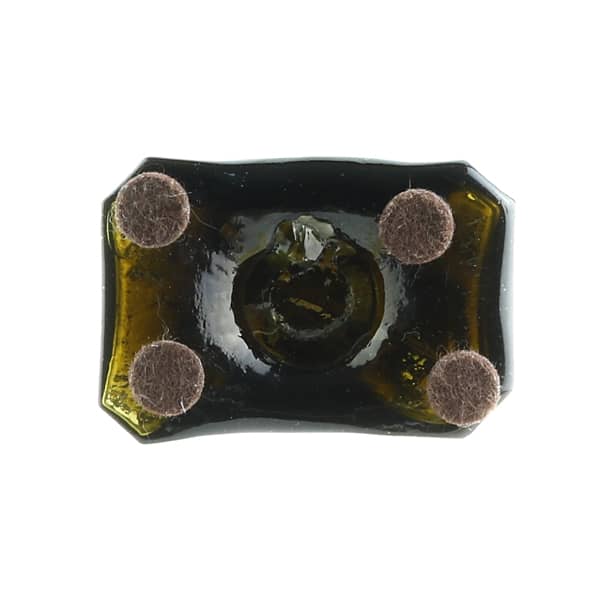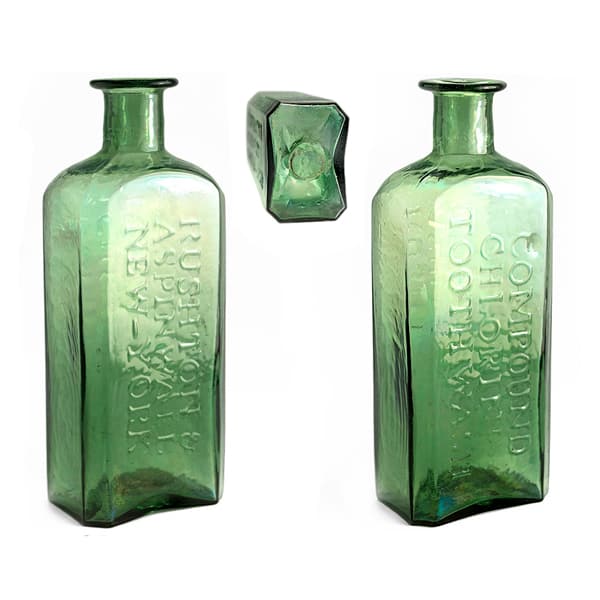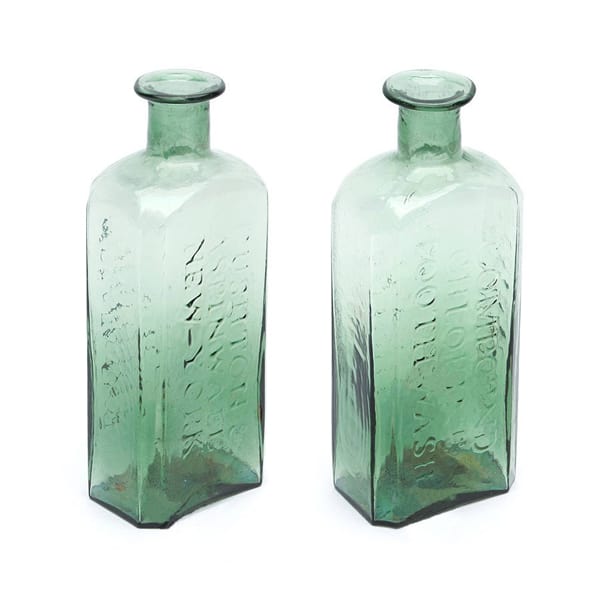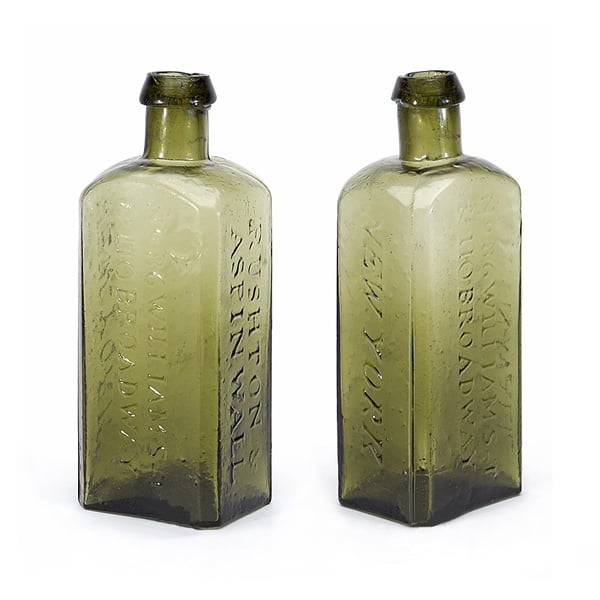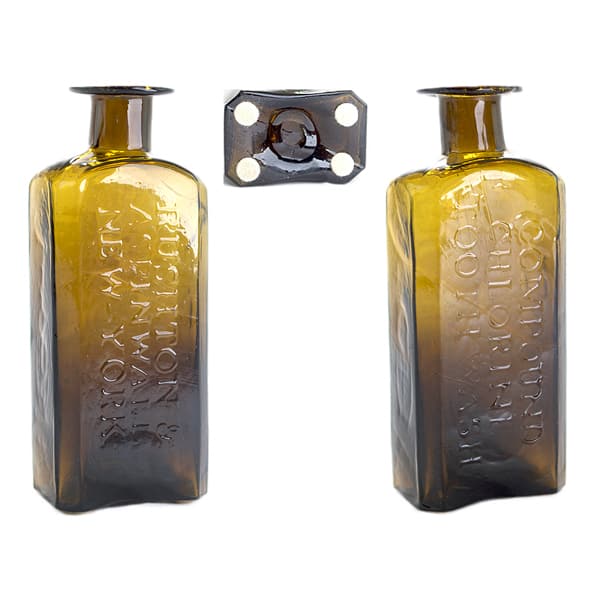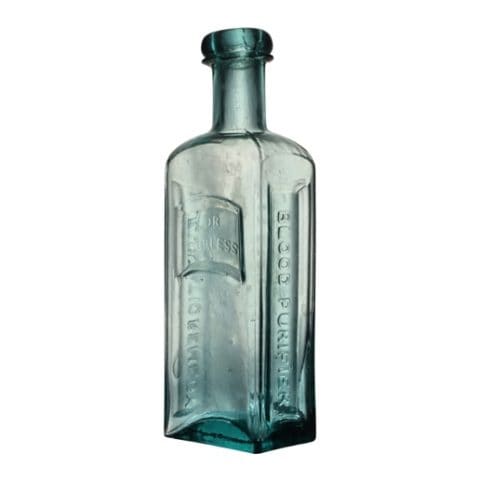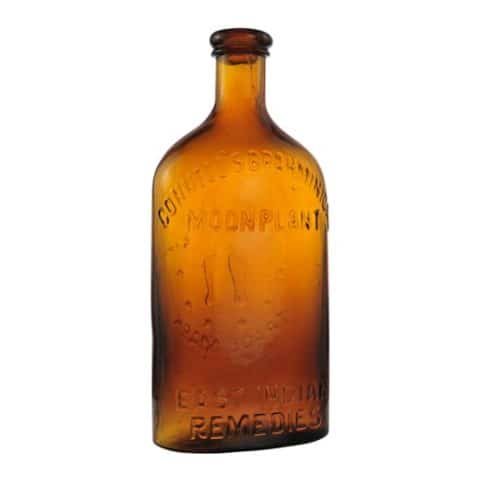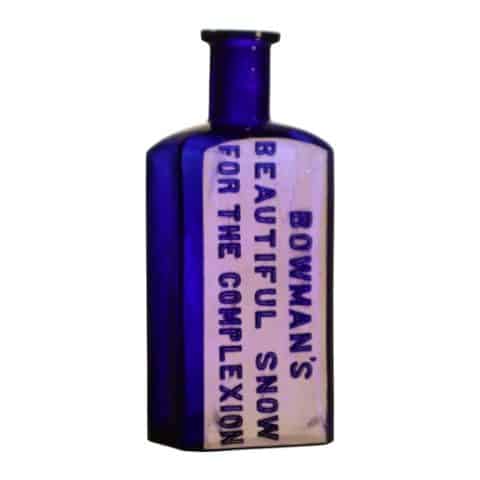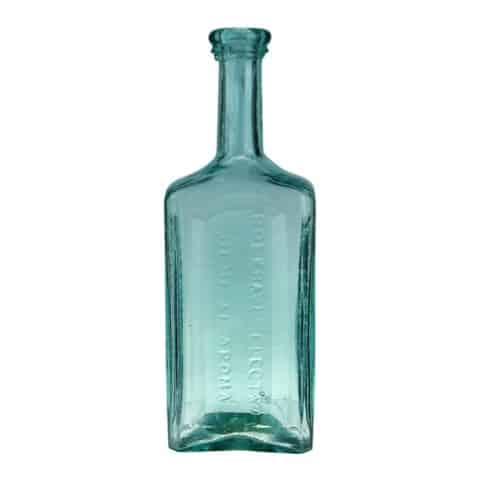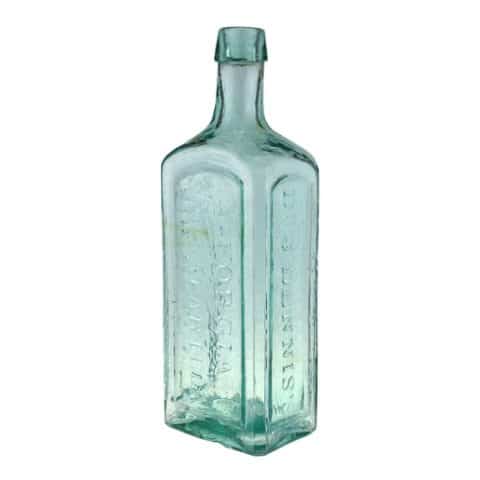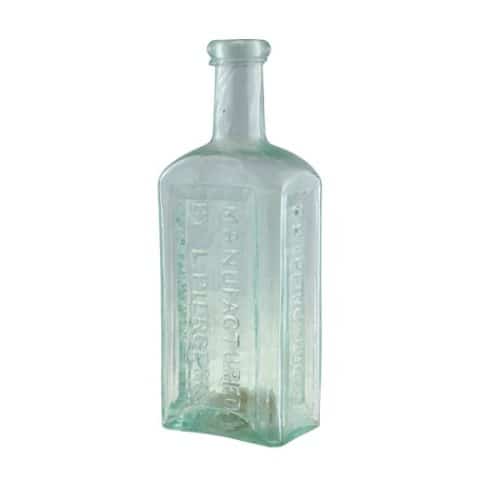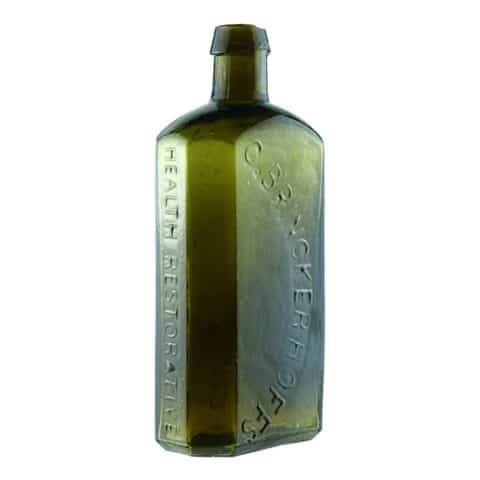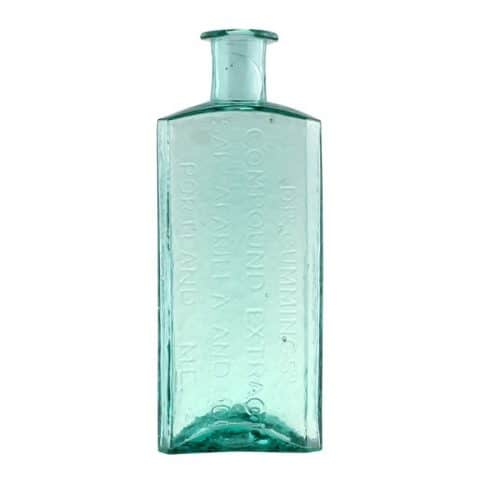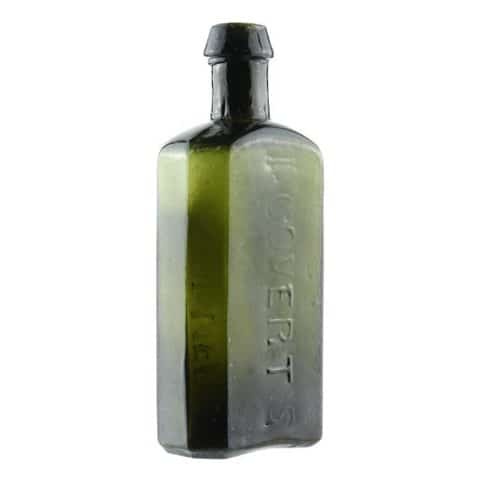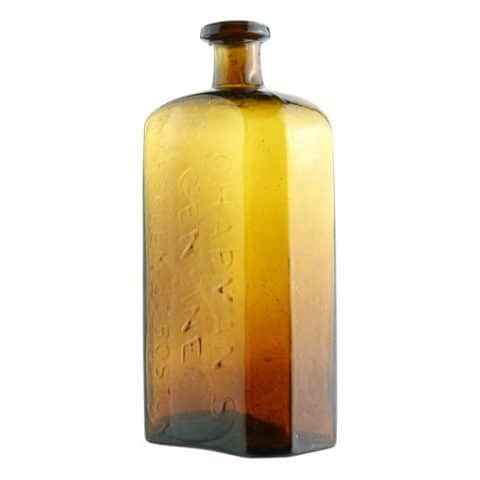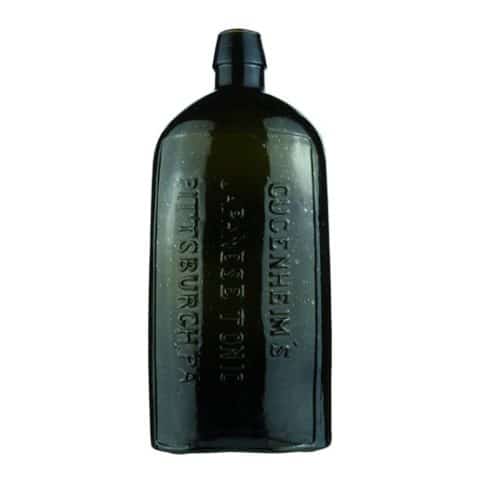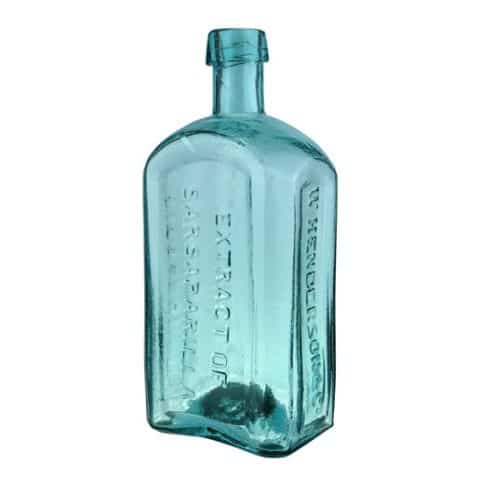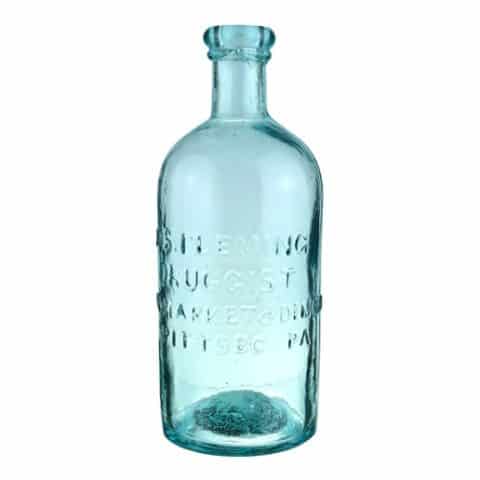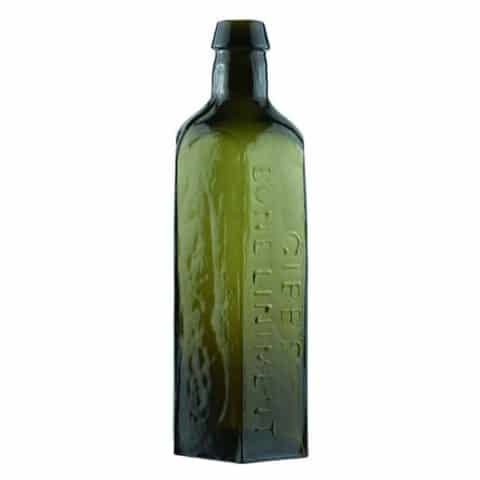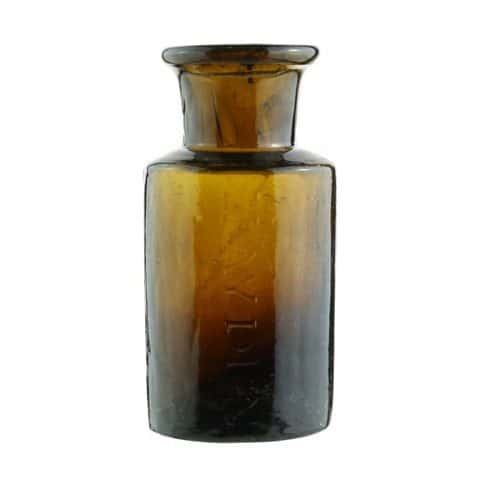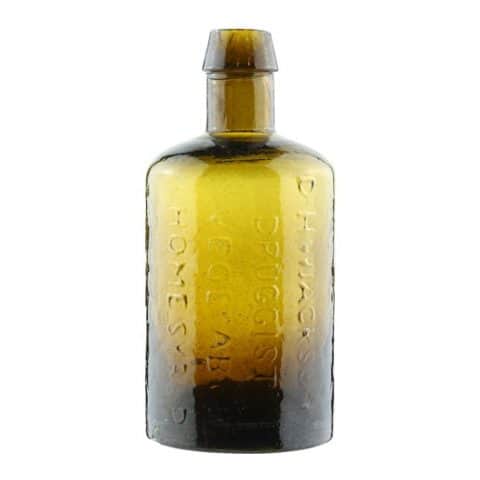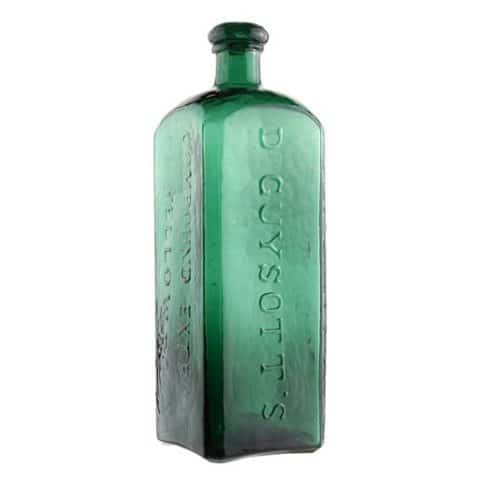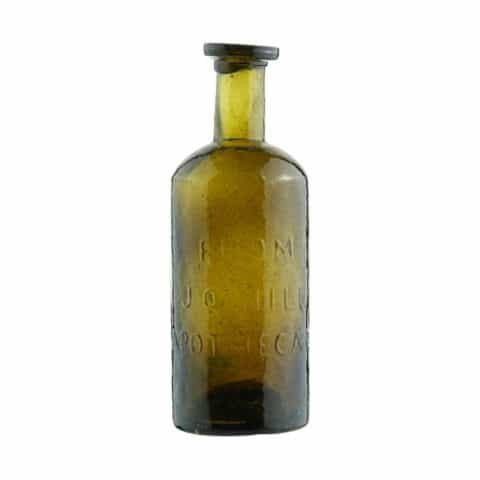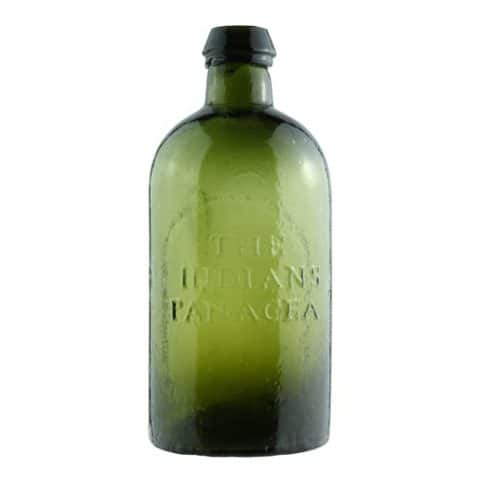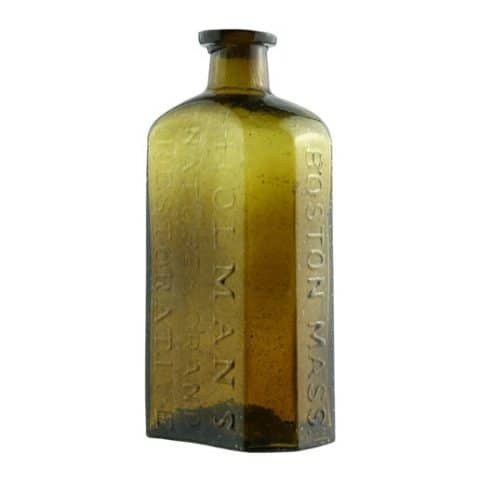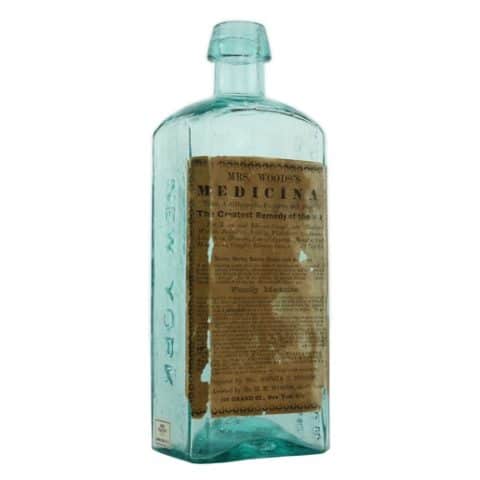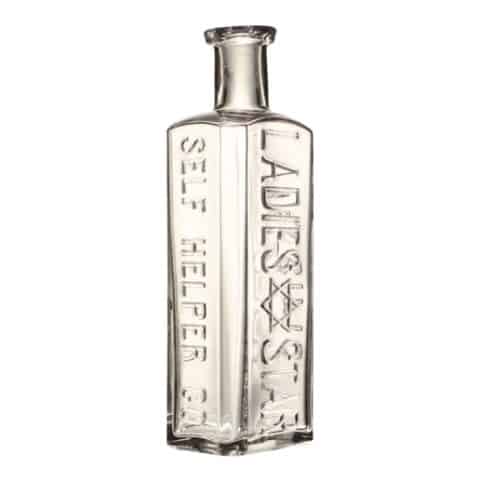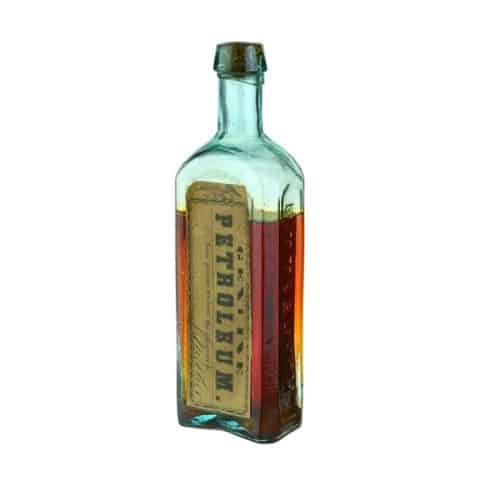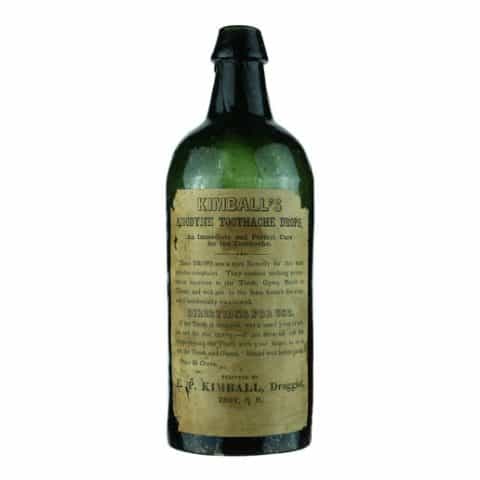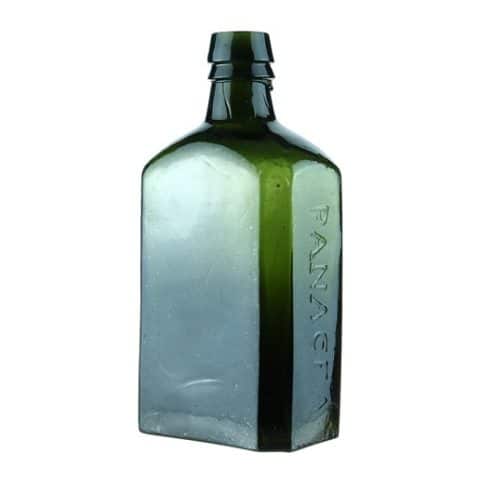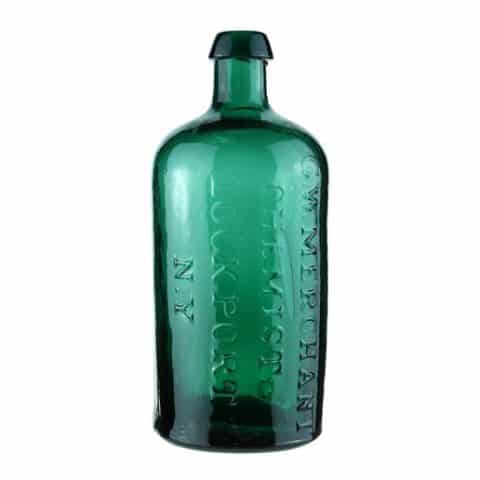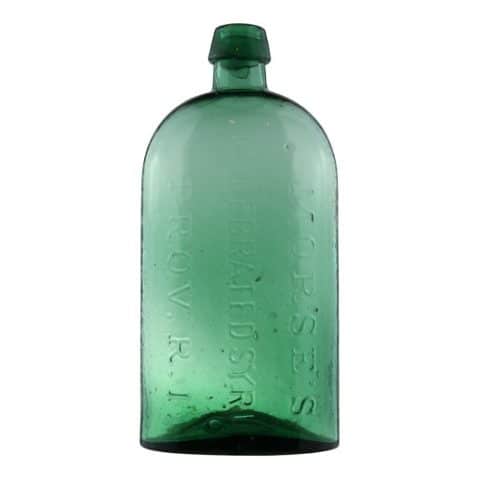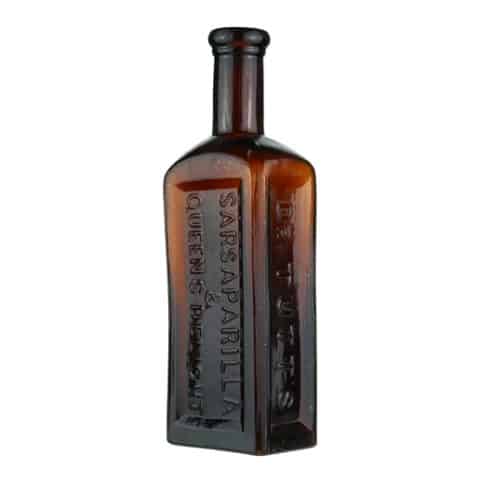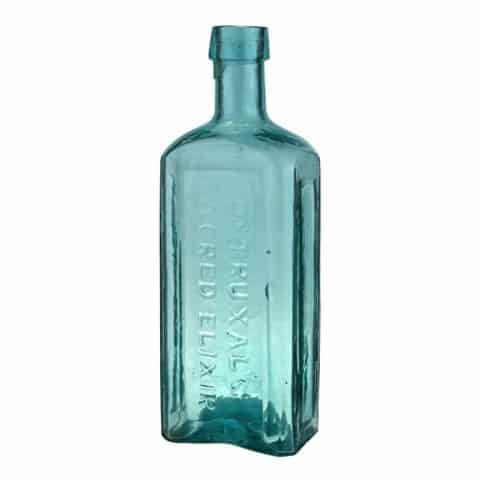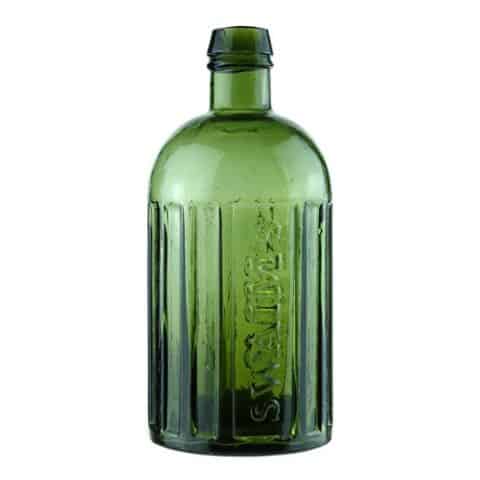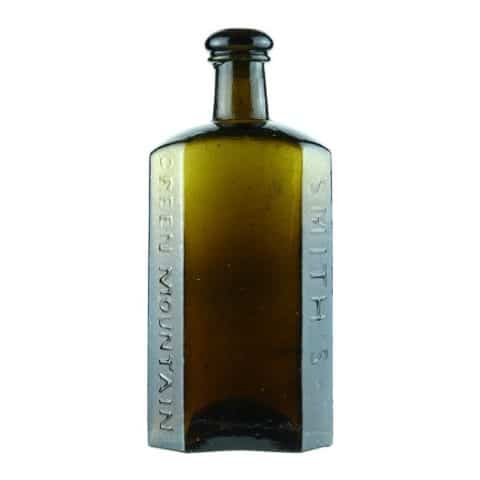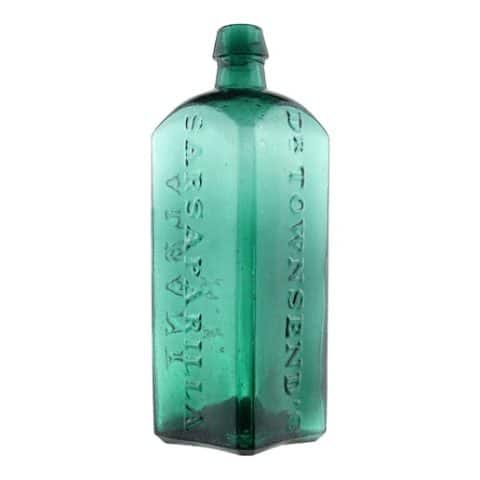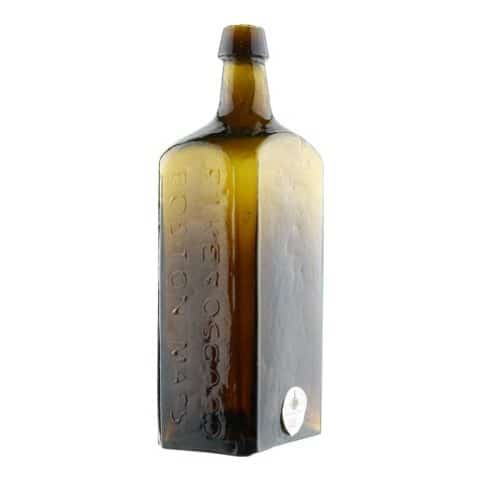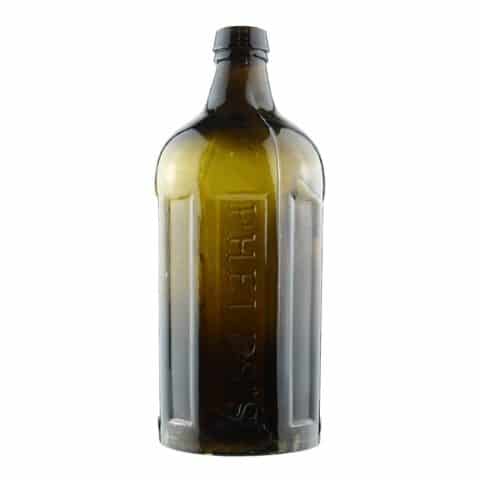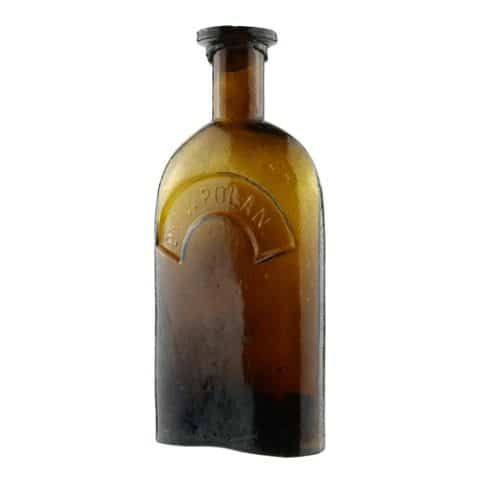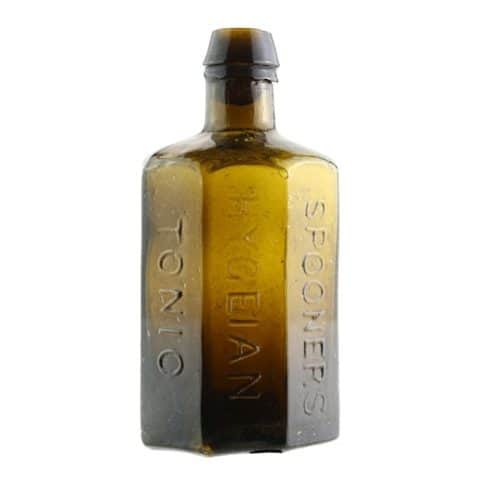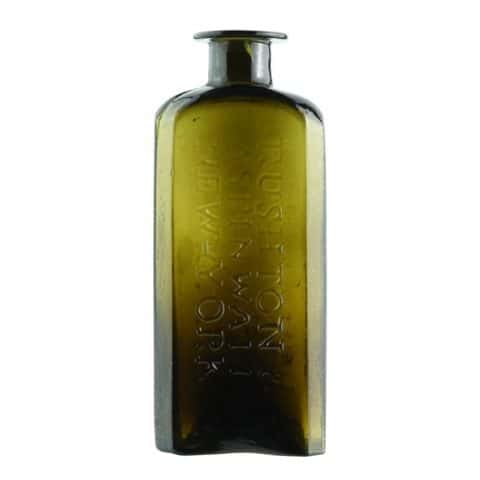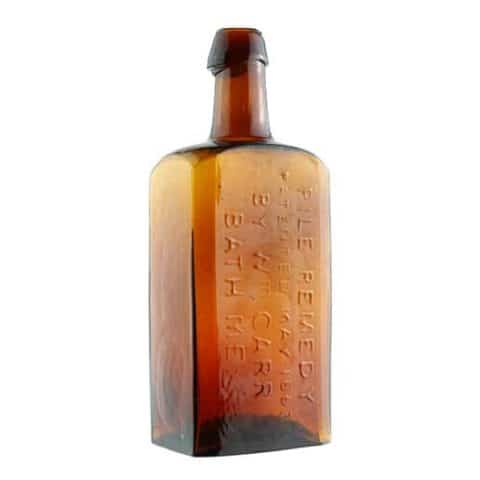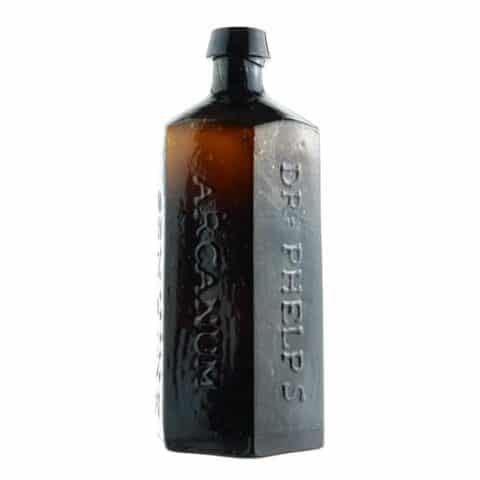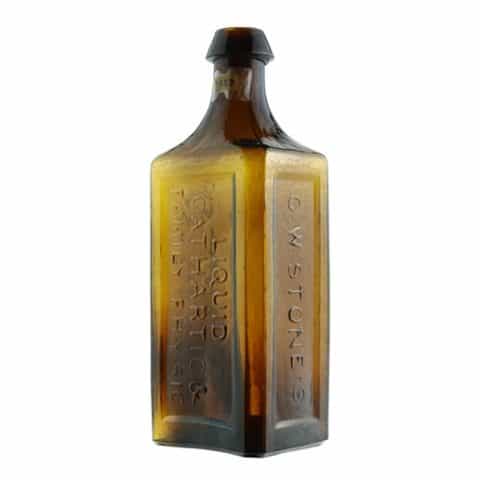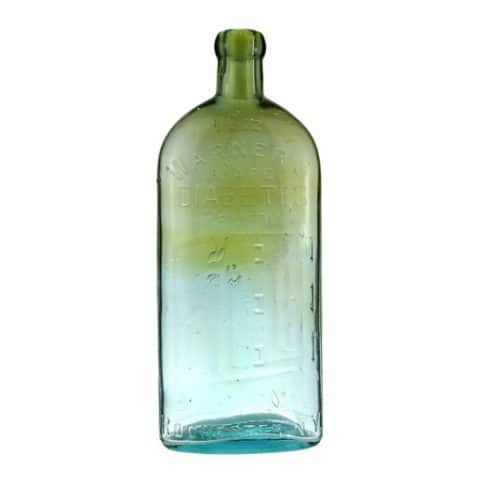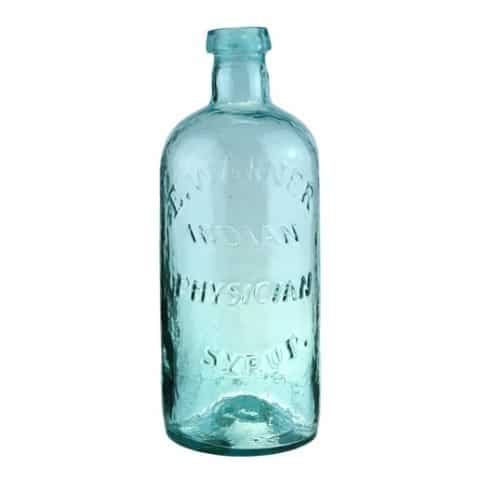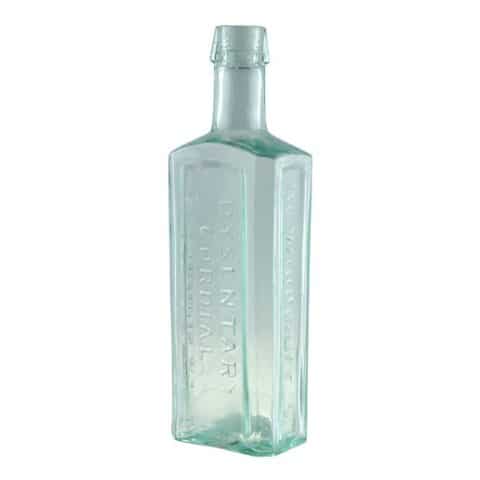Rushton & Aspinwall New York Compound Chlorine Tooth Wash
Rushton & Aspinwall New-York
Compound Chlorine Tooth Wash
William L. Rushton and James S. Aspinwall, New York City, N.Y.
Olive Green Medicine Bottle
Provenance: Michael George Collection
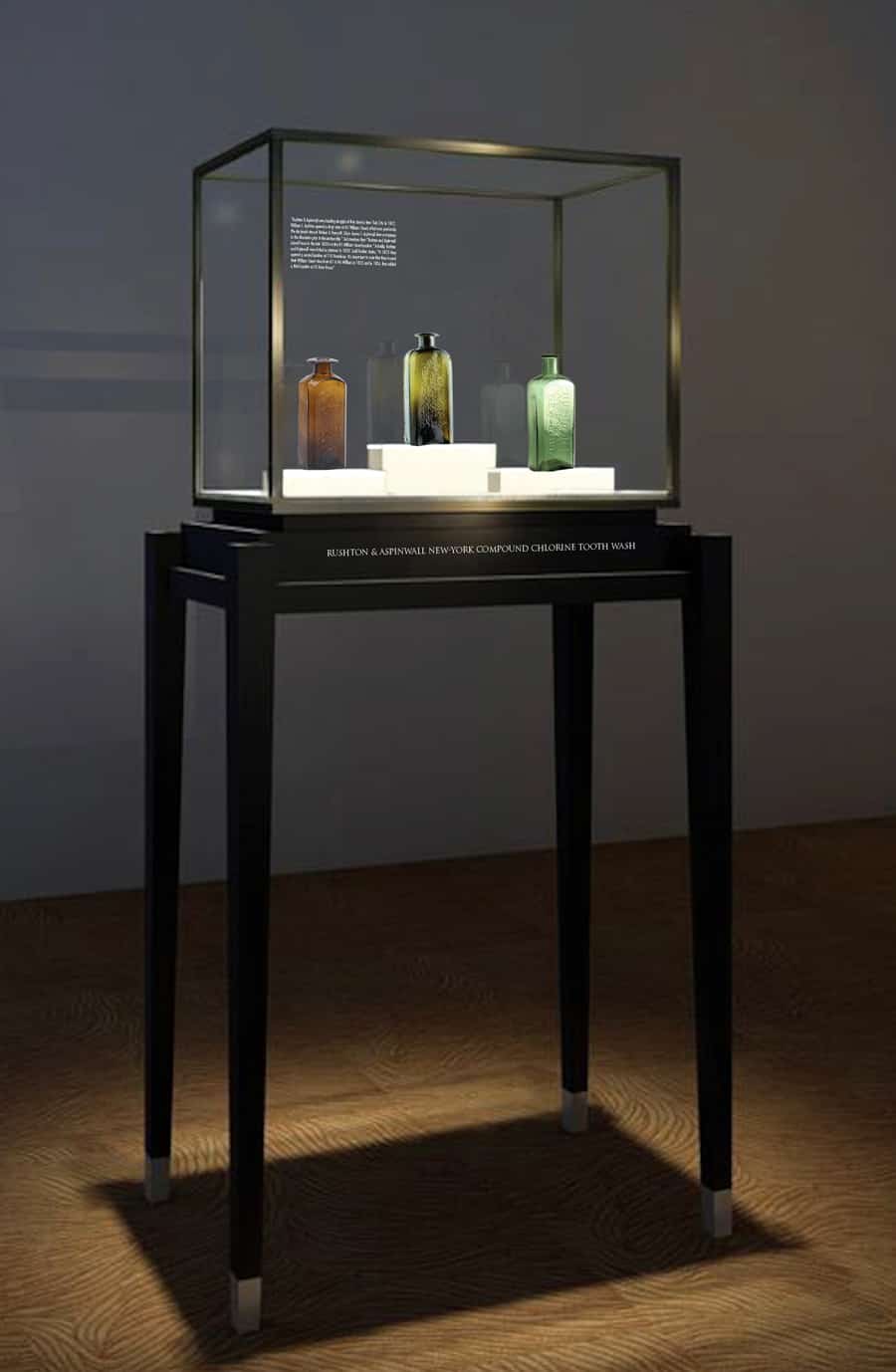
Compound Chlorine Tooth Wash was first marketed by the drug company of Lowe & Reed in Boston, Massachusetts, with an exclusive territorial agency given to Rushton & Aspinwall of New York City shortly after it was introduced.
Chlorine was first confirmed as an element and named in 1810 by Sir Humphry Davy in England. As a pharmaceutical agent, it was recognized as a disinfectant in the 1820s which was pioneered by Antoine-Germain Labarraque in France. The effects of chloride of lime were considered nothing short of a miracle in combating infection.

The embossed “Rushton & Aspinwall New-York Compound Chlorine Tooth Wash” bottle is a favorite with collectors as it was made in the mid-1830s and has an excellent form with a prominent tooled flared out lip. The bottle can be found in rich green and amber colors consistent with upstate New York or New England glasshouses such as Keene, Mount Vernon, and Willington. While amber examples are seen more often, our 6″ tall olive green bottle could be unique in glass color. There is a variant of the bottle in a similar shape with a sloping collar that is embossed “Rushton & Aspinwall No 86 William S-T & 110 Broadway New-York.” The bottle is visually represented in the Medicines Gallery.
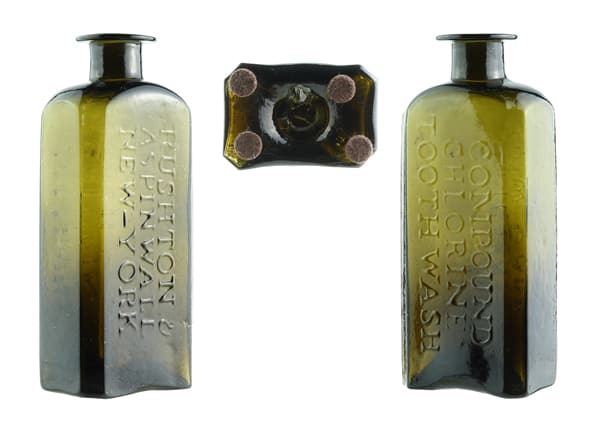
Rushton & Aspinwall were leading druggists of their time in New York City. In 1827, William L. Rushton opened a drug store at 81 William Street, which was previously the dry goods store of Reuben & Henry M. Sikes. James S. Aspinwall did not appear in the directories prior to when he became a partner with Rushton in 1830. The 1833 advertisement below states notes that Low (sic) & Reed were associated in the name of their “Original and Genuine Compound Chlorine Tooth Wash.” It was sold by Rushton & Aspinwall, Druggists on 81 William Street. About this time, the brand was put out and advertised as “Rushton & Aspinwall New-York Compound Chlorine Tooth Wash.”
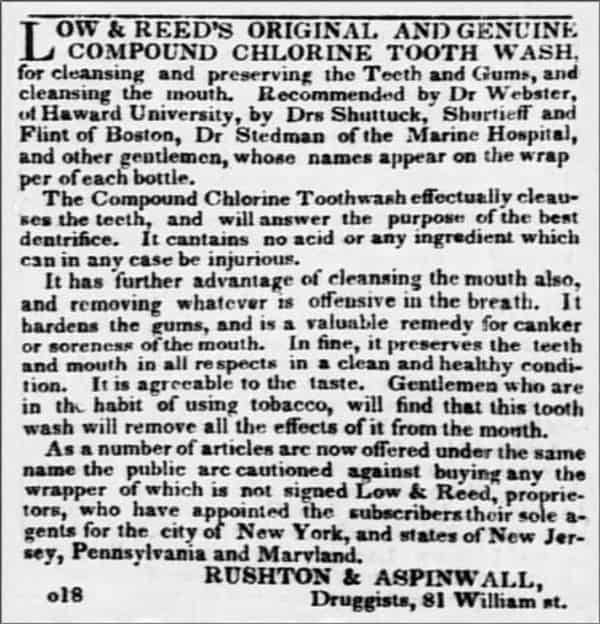
In 1833, Rushton & Aspinwall opened a second location at 110 Broadway. They moved their William Street store from 81 to 86 William Street in 1835 and in 1836 they added a third location at 10 Astor House.
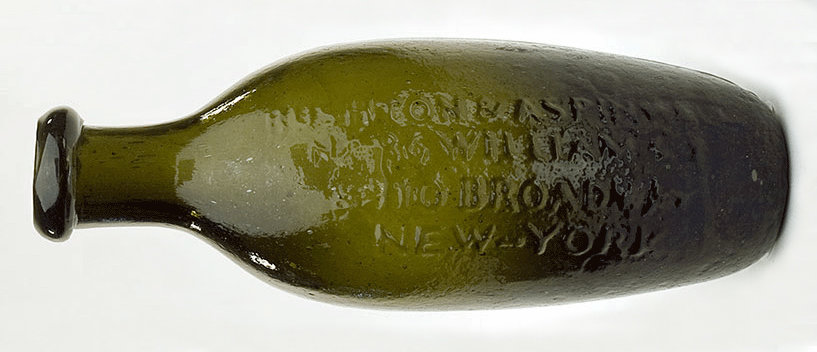
In May of 1836, Rushton & Aspinwall started selling soda and Seidlitz. The Seidlitz name comes from the Seidlitz Saline Springs of Bohemia, which were popular as a mild cathartic to assist in bowel movements and were a combination of tartaric acid, sodium bicarbonate, and potassium sodium tartrate. A July 1839 advertisement again mentions soda water in bottles and there is no mention of Seidlitz water.
Below is a receipt from James S. Aspinwall in 1862. If you look closely, it says formerly Rushton & Aspinwall, 1830. This partnership was early. It would be interesting to see if any Low & Reed bottles exist.
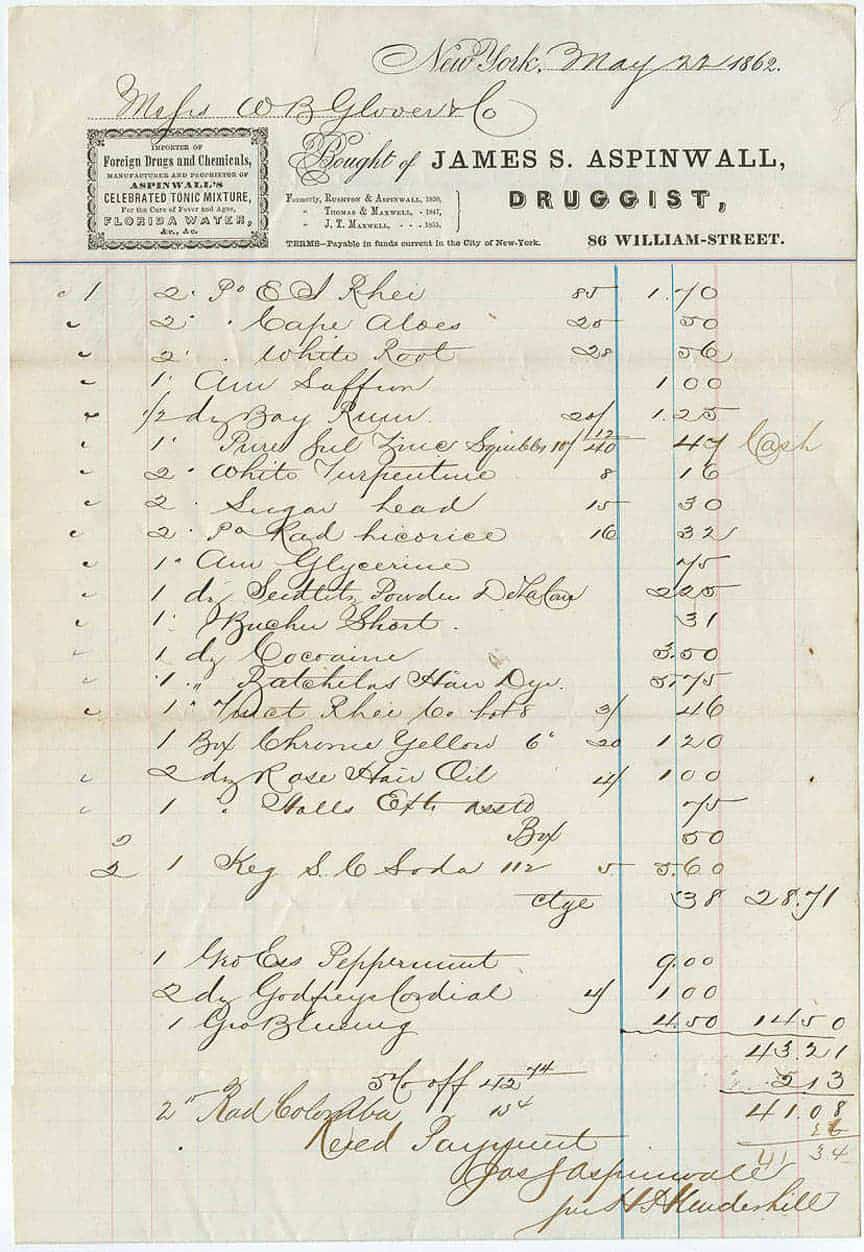
Primary Image: The Rushton & Aspinwall New-York Compound Chlorine Tooth Wash bottle imaged on location by the FOHBC Virtual Museum midwest studio led by Alan DeMaison.
Support: Reference to Chlorine for your Teeth by Eric McGuire, September-October 2017 issue of Bottles and Extras.
Support: Reference to American Bottles and Flasks and Their Ancestry by Helen McKearin and Kenneth M. Wilson, Crown Publishers Inc., New York, 1978.
Support: Reference to Early Soda & Mineral Water Bottles, New York City, New York, Rushton & Aspinwall, Tod von Mechow
Support Image: Auction Lot 193: “RUSHTON & / ASPINWALL / NEW-YORK – COMPOUND / CHLORINE / TOOTH WASH”, (Odell, pg. 307), New York, ca. 1835 – 1855, light emerald green, 6 1/4”h, open pontil, tool flared out lip. About perfect. Good glass whittle, great impression, rare desirable and possibly unique color! – Jim Hagenbuch, Glass Works Auctions, December 2017
Support Image: Auction Lot 28: “Rushton & / Aspinwall / New-York” – “Compound / Chlorine / Toothwash” Medicine Bottle, probably a Stoddard or Keene glasshouse, New Hampshire, 1840-1860. Rectangular with beveled corners, yellow amber with an olive tone, wide tooled flared mouth – pontil scar, ht. 6 inches. L/P plate 10, 4th row, #5 Strong embossing. Unusual and attractive mouth treatment. Fine condition. – Norman Heckler Jr. & Sr., Norman C. Heckler & Company, Premier Auction #108
Support Image: Auction Lot: “Rushton & / Aspinwall / New – York” – “Compound / Chlorine / Toothwash” medicine bottle, probably Willington Glass Works, West Willington, Connecticut. Circa 1840 to 1860. Rectangular with beveled corners, bright green with a slight yellowish tone, tooled flared mouth – pontil scar. Extremely rare and possibly unique example. There are two molds for the Rushton & Aspinwall bottle. This bottle is the rarer of the two molds and unique in its color. – Norman Heckler Jr. & Sr., Norman C. Heckler & Company
Support Image: Auction Lot 39: “Rushton & / Aspinwall / New-York” – “Compound / Chlorine / Toothwash” Medicine Bottle, America, 1830-1860. Rectangular with beveled corners, clear light green, tooled flared mouth – pontil scar, ht. 6 1/8 inches. Similar to AAM pg. 453 Beautiful whittled exterior surface. Interior of bottle retains a multicolor surface which adds greatly to the appearance. Fine condition. Ed & Sherry Losacano collection – Norman Heckler Jr. & Sr., Norman C. Heckler & Company
Support Image: Auction Lot 76: “Rushton & / Aspinwall” / “No 86 William S-T / & 110 Broadway” / “New-York” Medicine Bottle, America, 1840-1860. Rectangular with beveled corners, medium yellow olive, applied sloping collared mouth – pontil scar, ht. 6 5/16 inches; (moderate exterior wear and etching). AAM pg. 453 Beautiful color. Strong embossing. Rare. – Norman Heckler Jr. & Sr., Norman C. Heckler & Company, Premier Auction #93
Support Image: Auction Lot 267: “RUSHTON & / ASPINWALL / NEW-YORK – COMPOUND / CHLORINE / TOOTH WASH”, (Odell, pg. 208), New York, ca. 1835 – 1855, yellowish ‘old’ amber, 6”h, open pontil, tool flared out lip. It appears that a chip off the underside of the flared out lip has been partially polished out, otherwise this very rare bottle is in perfect condition. Polished chip aside this is an exceptional example with wonderful glass whittle and swirls, and a great impression! – Jim Hagenbuch, Glass Works Auctions, Discovery Auction #152, August 2021
Support Image: Olive green Rushton & Aspenwall, No. 86 Williams Street & 110 Broadway, New-York, soda water in an oval, ten pin form, 7-1/4″ – John Pastor, American Glass Gallery.
Join the FOHBC: The Virtual Museum is a project of the Federation of Historical Bottle Collectors (FOHBC). To become a member.

